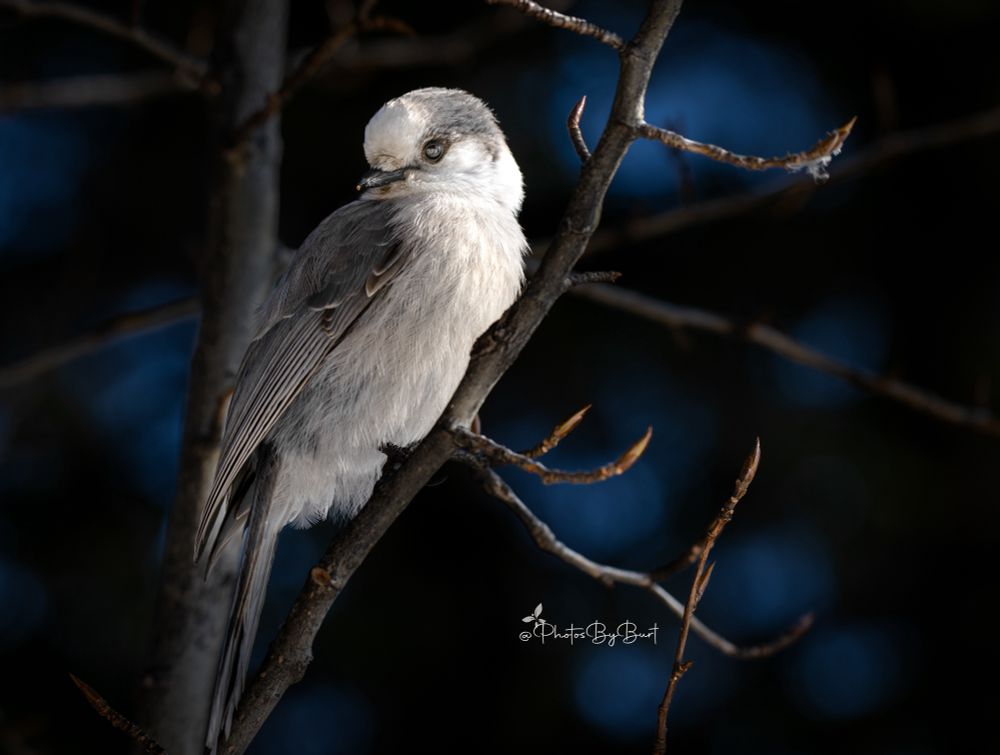
The Canada jay is a relatively large songbird, though smaller than other jays. A typical adult Canada jay is between 25 and 33 cm (9.8 and 13.0 in) long. Its wingspan is around 45 cm (18 in). It weighs about 65 to 70 g (2.3 to 2.5 oz). Adults have medium grey back feathers with a lighter grey underside. Its head is mostly white with a dark grey or black nape and hood, with a short black beak and dark eyes. The long tail is medium grey with lighter tips. The legs and feet are black. The plumage is thick, providing insulation in the bird's cold native habitat. Like most corvids, Canada jays are not sexually dimorphic, but males are slightly larger than females.
Canada jays, also known as gray jays or whiskeyjacks, are known for their unique food-caching habits and their fearless nature around humans. Image taken by me with my Nikon Z9. 🪶 #bird #birder #photography #photooftheday #wildlifephotography #wildlife #nature #god #art #bluesky #photographer #nikon
21.04.2025 03:23 — 👍 56 🔁 3 💬 3 📌 0
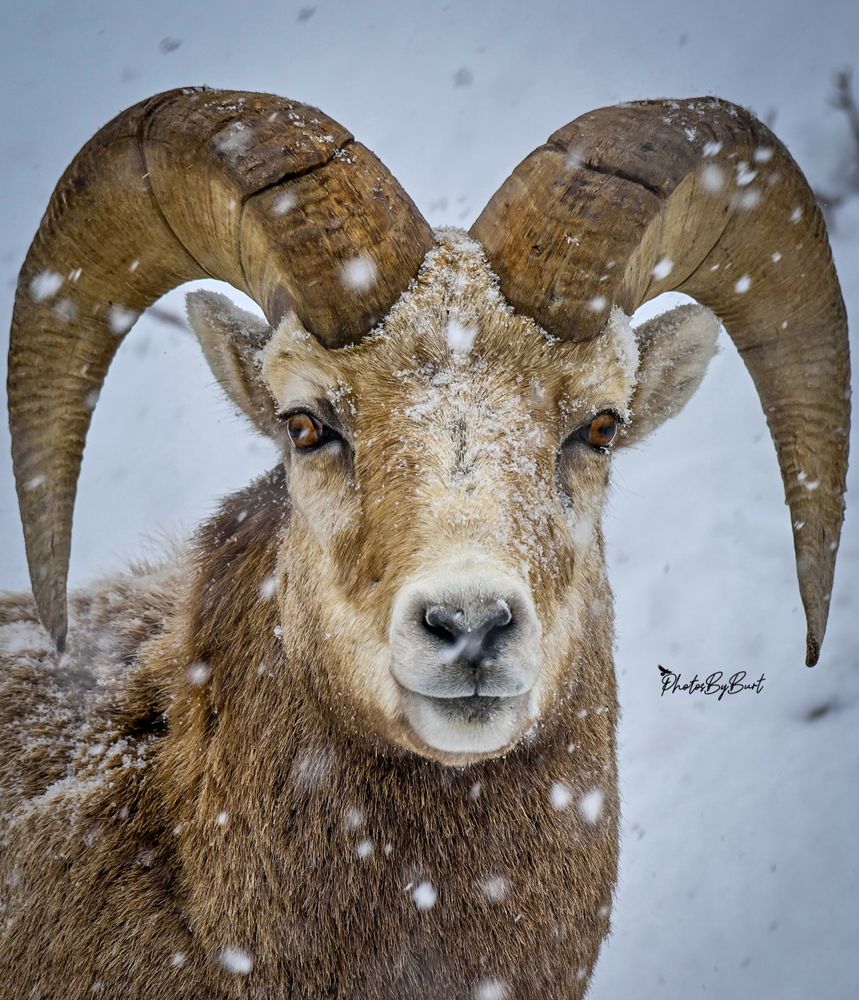
Bighorn sheep are named for the large, curved horns borne by the rams (males). They range in color from light brown to grayish or dark, chocolate brown, with a white rump and lining on the backs of all four legs. Males typically weigh 58–143 kg (128–315 lb), are 90–105 cm (35–41 in) tall at the shoulder, and 1.6–1.85 m (63–73 in) long from the nose to the tail. Male bighorn sheep have large horn cores, enlarged cornual and frontal sinuses, and internal bony septa. These adaptations serve to protect the brain by absorbing the impact of clashes.
“The size and curl of a Big Horn Sheep ram's horns are a sign of their age and status within the herd.” Image taken by me with my Nikon Z9. 🦊 #photography #photooftheday #wildlifephotography #wildlifephotographer #nature #god #art #bluesky #photographer #nikon #digitalart #ram #photo #love #wildlife
18.04.2025 23:17 — 👍 59 🔁 4 💬 1 📌 0
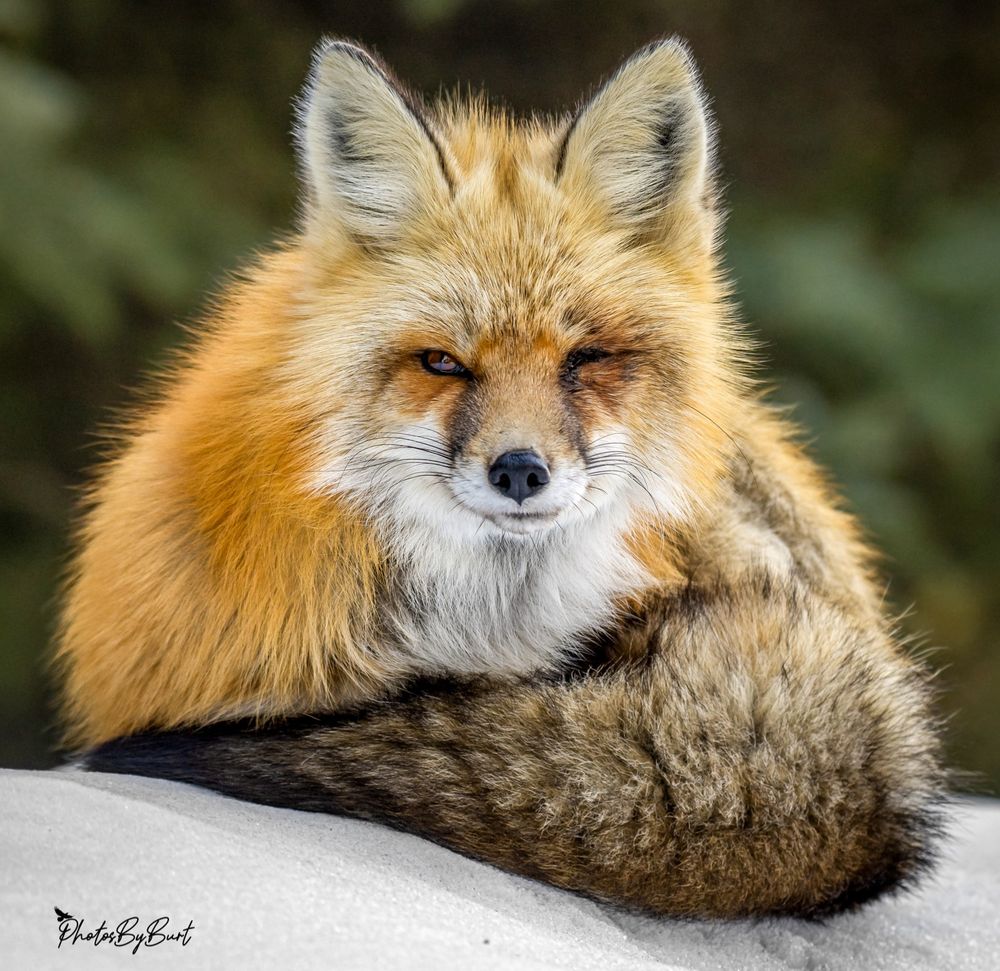
The red fox is the largest true fox species and a member of the dog family. Known for their reddish fur and black legs, they are found across the Northern Hemisphere, including Europe, Asia, North America, and parts of North Africa. Appearance: Red foxes have thick, soft fur that's reddish orange or yellowish on the upper body, head, and most of the tail. The underside, throat, chest, belly, and tail tip are white. This female is sitting atop a white mound of snow. She has big ears standing atop attention, red fur, black lower legs and a very thick bushy tail. She is looking directly at my camera. She also has a damaged left eye so she is blind in that eye.
“Red foxes have over 28 different calls and vocalizations.” This is another image taken by me with my Nikon Z9 of the one-eyed female in Prince Albert NP. She’s a real beauty -a special girl. 🦊 #fox #photography #photooftheday #wildlifephotography #wildlifephotographer #nature #bluesky #nikon #furry
12.04.2025 19:50 — 👍 55 🔁 5 💬 1 📌 0
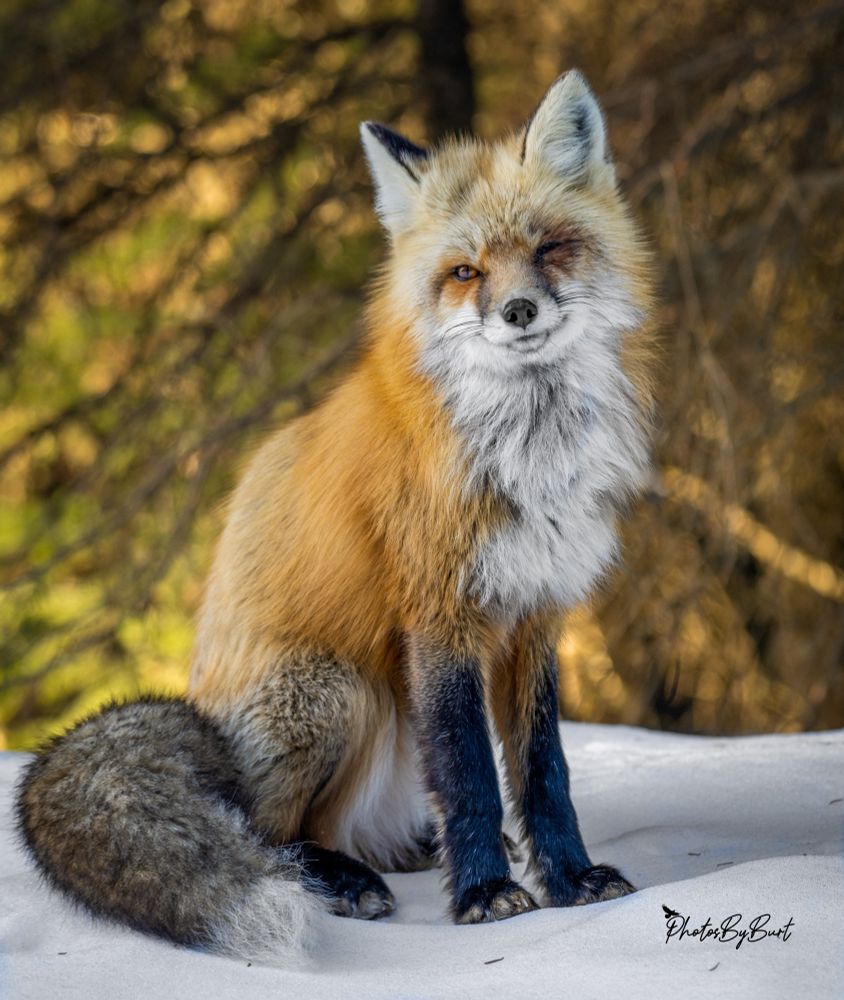
A female red fox, often called a vixen, is a sleek, agile mammal known for her intelligence and adaptability. Here’s a detailed description: Appearance: Size: Slightly smaller and lighter than male red foxes. A typical vixen weighs between 8 to 12 pounds and measures about 35 to 40 inches in total length (including the tail). Fur: Dense, soft, and usually a reddish-orange color, with variations ranging from pale yellowish-red to deep russet. The underside is usually white or light gray. Tail: Bushy with a white tip, often called a “brush.” The tail is about a third of her total body length and helps with balance and warmth. Legs and Ears: Black legs and large, pointed black-rimmed ears that aid in acute hearing. Her face is narrow with a long, slender snout.
This little red fox is a local legend in Waskesiu, Saskatchewan. Everyone knows her from the other foxes because she has a damaged left eye and is incredibly friendly. Image taken by me with my Nikon Z9. 🦊 #fox #photography #photooftheday #wildlife #mammal #nature #photographer #nikon #cute #animal
08.04.2025 02:35 — 👍 196 🔁 21 💬 5 📌 1
Thanks!
27.03.2025 02:07 — 👍 0 🔁 0 💬 0 📌 0
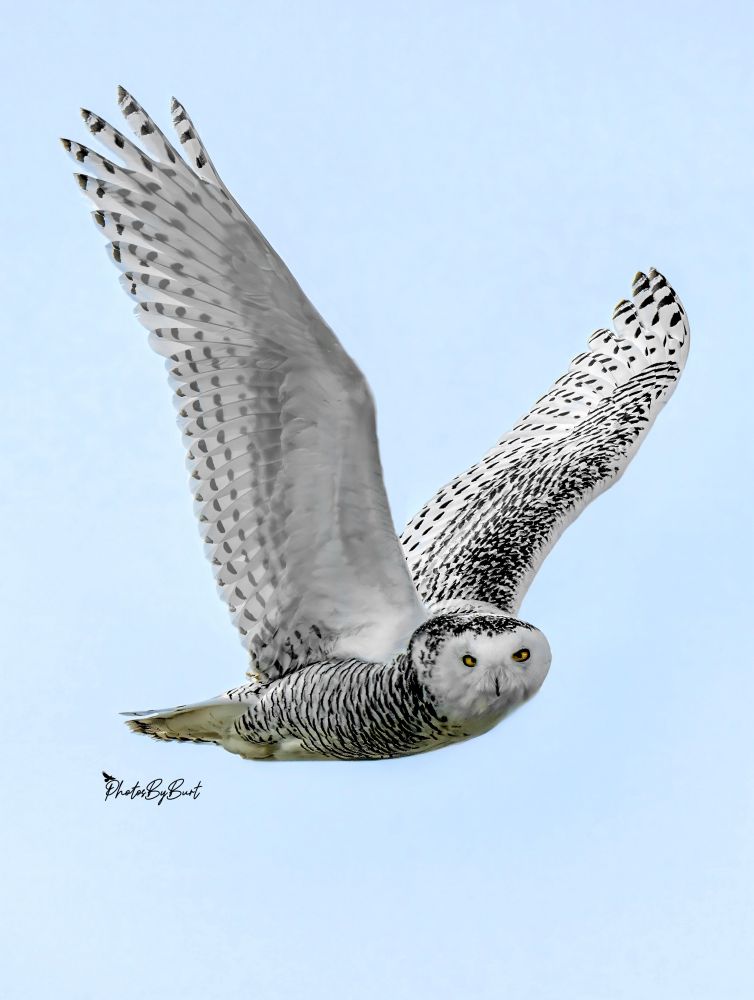
Needing insulation from Arctic temperatures, snowy owls have a lot of feathers. Their feet are covered with feathers, like fluffy slippers. Image taken by me with my Nikon Z9 with my Nikon 200-500mm lens on board at 500mm. 🪶 #bird #birder #photography #photooftheday #nature #bluesky #photo #nikon
27.03.2025 00:46 — 👍 53 🔁 1 💬 2 📌 0
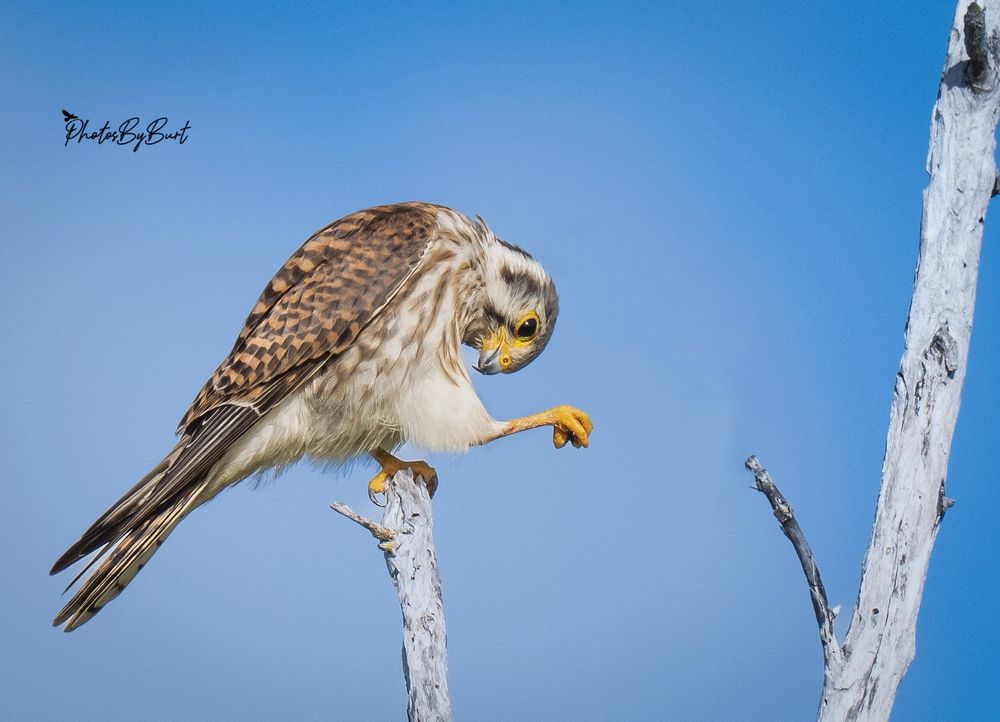
Under traditional classification, the American kestrel is the smallest raptor in America. The American kestrel is sexually dimorphic, although there is some overlap in plumage coloration between the sexes. The bird ranges from 22 to 31 cm in length with a wingspan of 51–61cmThe female kestrel is larger than the male, though less so than larger falcons, being typically about 10% to 15% larger within a subspecies. The more northern subspecies tend to larger sizes (northern hemisphere), with a large northern female being about twice the size of a small southern male. The male typically weighs 80–143g, and the female 86–165g. In standard measurements, the wing bone is 16–21cm long, the tail is 11–15 cm and the tarsus is 3.2–4cm. Physically, American kestrels are leaner and less muscular than larger falcons. The pectoral flight muscles of the American kestrel make up only about 12% of its body weight, as compared to about 20% for the strongest flying falcons such as the peregrine. Their less muscular body type is adapted to energy-conserving ambush hunting, rather than spending large amounts of energy-consuming time on the wing and getting into long tail-chases of bird prey. For their size, they have strong talons and beaks, and can swiftly dispatch prey. Their lean build and energy-conserving strategy allow a lower daily food intake than if they were more strongly muscled, yet with enough strength to commonly take bird prey as large as themselves, and occasionally larger. The success of this body style and hunting strategy is reflected in the high success of the species in densely populating a large range throughout the Americas. The flight of the American kestrel is not so dramatic and swift as more muscular falcons such as merlins and peregrines, but their efficient adaptation to a broader diet of more available smaller prey, and need for less food per day, has resulted in there being many more of them.
The American kestrel is the smallest and most common falcon in North America. Image taken by me with my Nikon Z9. 🪶🦊 #bird #birder #photography #photooftheday #wildlifephotography #wildlifephotographer #nature #beautiful #art #bluesky #photographer #nikon #god #bluesky #blue #falcon #digitalart
10.03.2025 01:04 — 👍 45 🔁 4 💬 1 📌 0
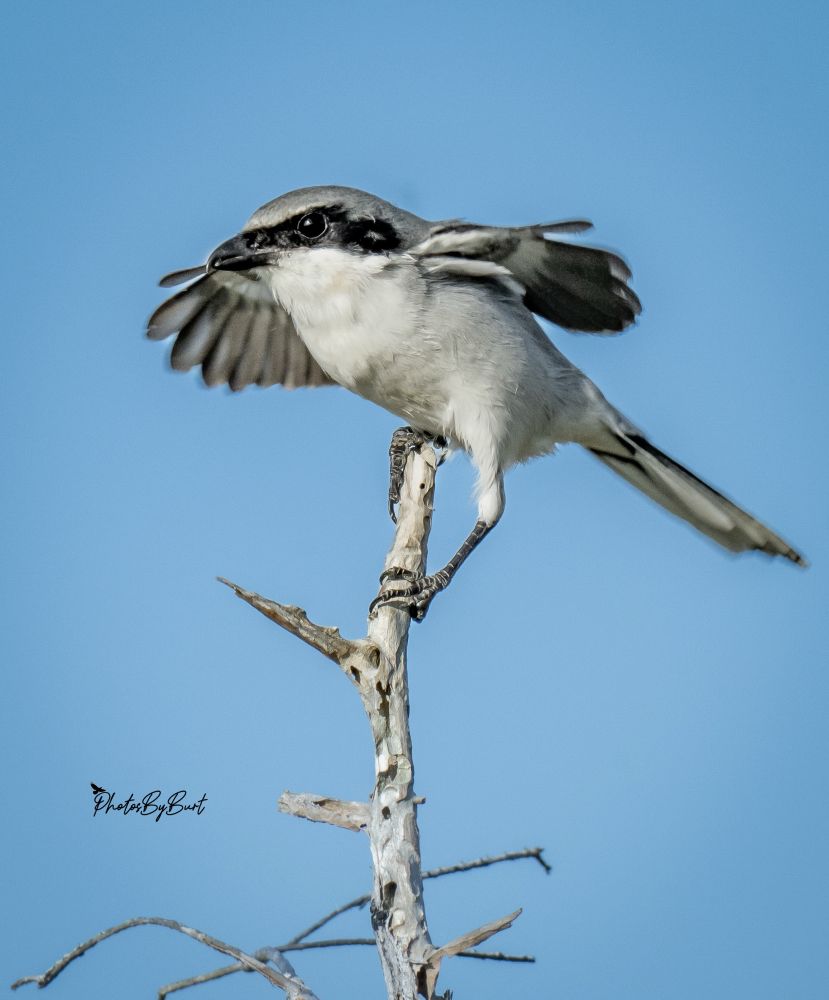
The loggerhead shrike is a medium-sized passerine. "Loggerhead" refers to the relatively large size of the head as compared to the rest of the body. The wing and tail length are about 3.82 in (9.70 cm) and 3.87 in (9.83 cm) long, respectively. It weighs on average 1.8 oz (50 g), with a range of 1.6–2.1 oz (45–60 g) for a healthy adult shrike.
Measurement ranges
Length: 7.9–9.1 in (20–23 cm)
Weight: 1.2–1.8 oz (34–51 g)
Wingspan: 11.0–12.6 in (27.9–32.0 cm)
The adult plumage of the loggerhead shrike is grey above with a white to pale grey breast and black tarsi and feet. The bird possesses a black mask that extends across the eyes to its bill. The wings are black with a distinct white patch on the primaries. The tail is black edged with white and the irises are brown. The beak is short, black, and hooked, and contains a tomial tooth to help tear into prey. It is difficult to sex an adult loggerhead shrike in the field as they are sexually monochromatic. However, several studies have reported sexual dimorphism in plumage and size traits. Juveniles possess a paler gray plumage that is subtly vermiculated.
The loggerhead shrike can be distinguished from the northern shrike by its smaller size, darker grey plumage, and larger black face mask that covers the eye completely. It also has a shorter bill with less prominent hook. Their calls are similar.
With a hooked beak and predatory habits, the Loggerhead Shrike has acquired the ferocious nickname: The Butcher Bird. Image taken by me with my Nikon Z9. 🪶 #bird #birder #photography #photooftheday #wildlifephotography #wildlifephotographer #nature #art #bluesky #photographer #nikon #digitalart
05.03.2025 04:31 — 👍 32 🔁 0 💬 1 📌 0
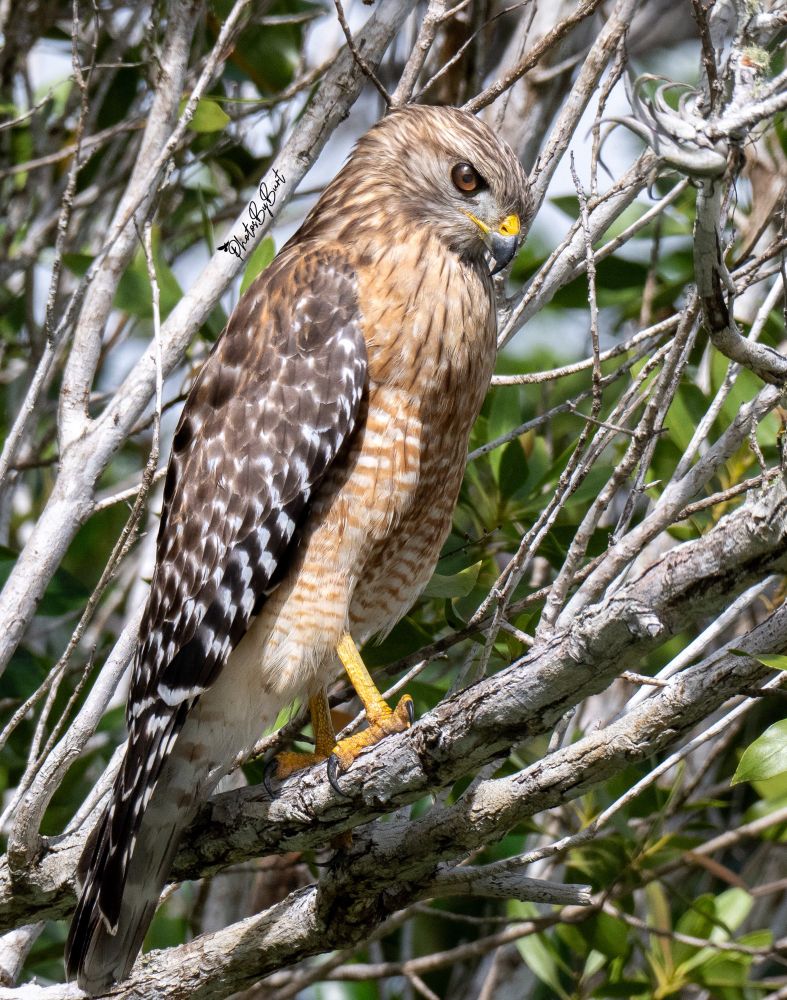
Males are 38 to 58 cm (15 to 23 in) long and weigh on average 550 g (1.21 lb). Females are slightly larger at 47 to 61 cm (19 to 24 in) in length and a mean weight of 700 g (1.5 lb). The wingspan can range from 90 to 127 cm (35 to 50 in). Adult birds can vary in mass from 460 to 930 g (1.01 to 2.05 lb). Among standard measurements, the wing bone is 28–35 cm (11–14 in) long, the tail is 16–24 cm (6.3–9.4 in) long and the tarsus is 7.5–9 cm (3.0–3.5 in). Adults have brownish heads, reddish chests, and pale bellies with reddish bars. Their tails, which are quite long by Buteo standards, are marked with narrow white bars. Red "shoulders" are visible when the birds are perched. These hawks' upper parts are dark with pale spots and they have long yellow legs. Western birds may appear more red, while Florida birds are generally paler. The wings of adults are more heavily barred on the upper side. Juvenile red-shouldered hawks are most likely to be confused with juvenile broad-winged hawks, but can be distinguished by their long tails, crescent-like wing markings, and a more flapping, Accipiter-like flight style. In direct comparison, it is typically larger and longer proportioned than the broad-wing, though is slightly smaller and more slender than most other common North American Buteo species. This bird is sometimes also confused with the widespread red-tailed hawk. That species is larger and bulkier, with more even-sized, broad wings, and is paler underneath, with a reddish tail often apparent. The red-tail is also more likely to soar steadily, with wings in a slight dihedral.
Red-Shouldered Hawks courtship lasts about 18 days, and during this time “circling flight” and “sky-dancing” displays are performed. Image taken by me with my Nikon Z9. 🪶 #bird #birder #photography #photooftheday #wildlifephotography #nature #god #art #bluesky #photographer #nikon #digitalart
01.03.2025 23:47 — 👍 52 🔁 2 💬 1 📌 0
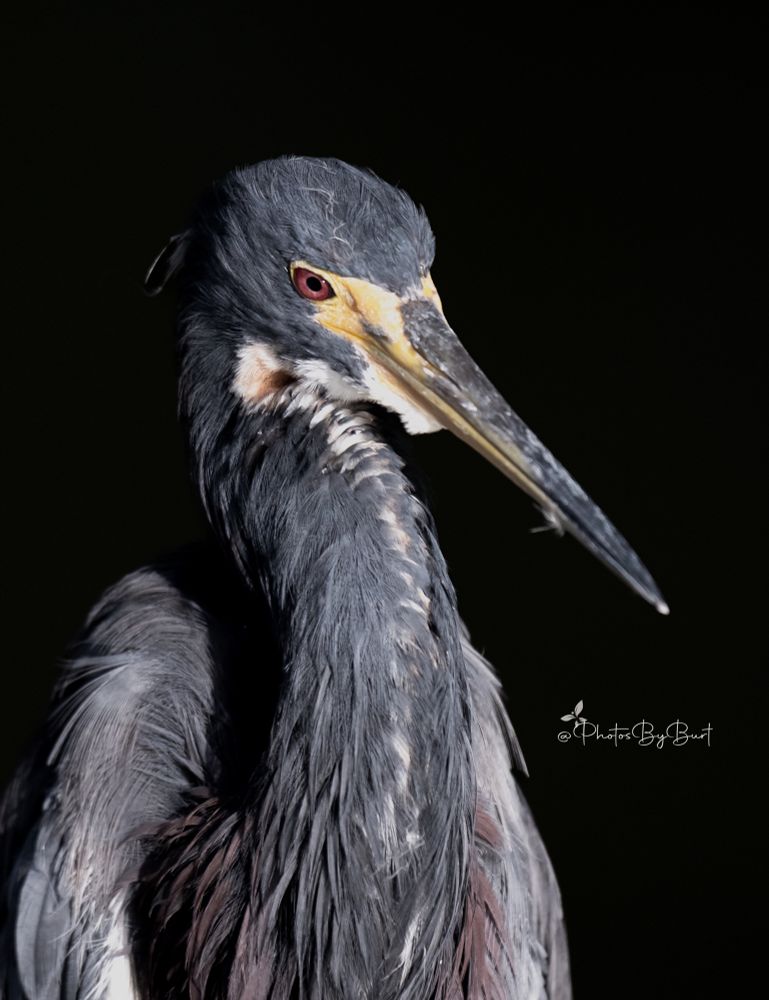
This species measures from 56 to 76 cm (22 to 30 in) long and has a typical wingspan of 96 cm (38 in). The slightly larger male heron weighs 415 g (14.6 oz) on average, while the female averages 334 g (11.8 oz). It is a medium-large, long-legged, long-necked heron with a long, pointed, yellowish or greyish bill with a black tip. Its legs and feet turn from dark yellow in nonbreeding birds to pink in breeding adults. The plumage of the triclolored heron changes dramatically from its juvenile form to its adult form.
Adults have a blue-grey head, neck, back, and upper wings, with a white line along the neck. The belly is white. In breeding plumage, they have long, blue, filamentous plumes on their heads and necks, and buff ones on their backs.
The Tricolored Heron is listed as "Threatened" by the Florida Fish and Wildlife Conservation Commission. Image taken by me with my Nikon Z9. 🪶 #bird #birder #photography #photooftheday #wildlifephotography #wildlifephotographer #nature #god #art #bluesky #photographer #nikon #love #digitalart #photo
27.02.2025 03:13 — 👍 102 🔁 3 💬 4 📌 0
![This is a close up image of the head of a yellow wild budgerigar with black stripes and black eyes. Wild budgerigars average 18 cm (7 in) long,[6] weigh 30–40 grams (1.1–1.4 oz), 30 cm (12 in) in wingspan, and display a light green body colour, while their mantles display pitch-black mantle markings (blackish in fledglings and immatures) edged in clear yellow undulations. The forehead and face is yellow in adults.](https://cdn.bsky.app/img/feed_thumbnail/plain/did:plc:nkbq3zourdnf3d6qh7df4h4i/bafkreie6hnskis6mfz6yptjp3dtiae7qkzbe2lx2bii7n7b57lx3wsersu@jpeg)
This is a close up image of the head of a yellow wild budgerigar with black stripes and black eyes. Wild budgerigars average 18 cm (7 in) long,[6] weigh 30–40 grams (1.1–1.4 oz), 30 cm (12 in) in wingspan, and display a light green body colour, while their mantles display pitch-black mantle markings (blackish in fledglings and immatures) edged in clear yellow undulations. The forehead and face is yellow in adults.
“Contrary to popular migration patterns, budgerigars generally fly NORTH during winter, covering significant distances as they migrate.” Image taken by me with my Nikon Z9. 🪶 #bird #birder #photography #photooftheday #wildlifephotography #wildlifephotographer #nature #god #art #bluesky #nikon #birds
22.02.2025 16:32 — 👍 23 🔁 2 💬 1 📌 0
Thank you! 😊
19.02.2025 12:16 — 👍 0 🔁 0 💬 0 📌 0
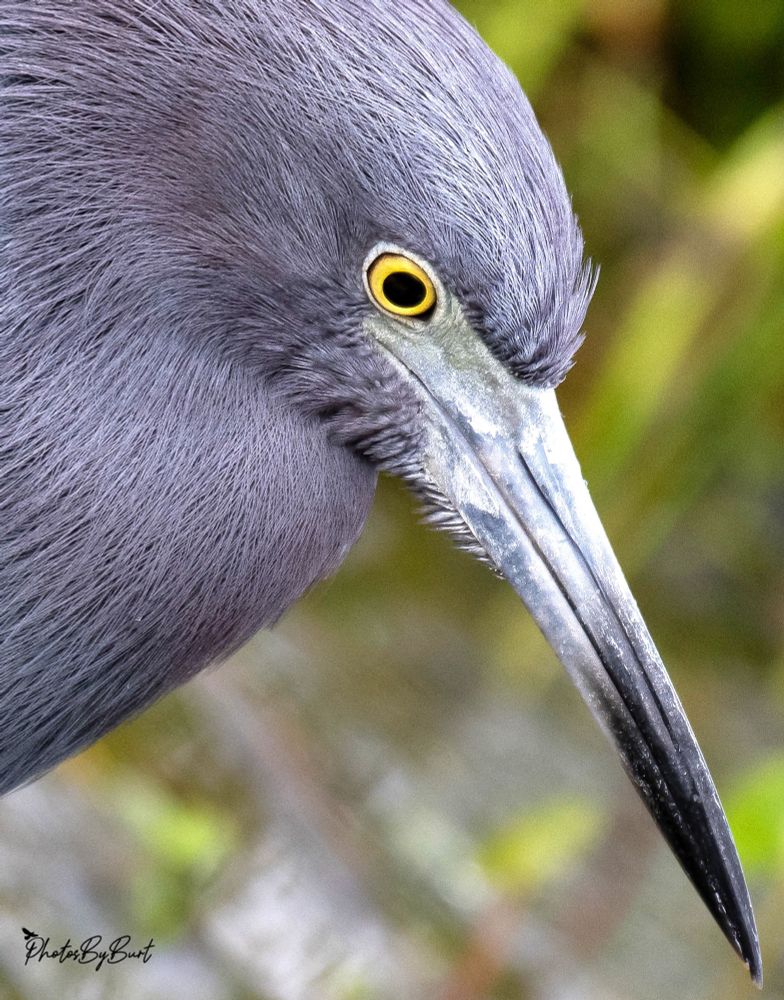
Males and females have the same coloration. The adults are darkly colored, with purple-maroon heads and blue bodies. During the breeding season, their heads turn dark red. They have two-toned bills, which are a light blue at the base, with black tips. Their eyes are yellow and their legs are greenish. Juveniles are almost completely white, although the upper primaries are somewhat dark in color. Like adults, their bills are two-toned. Immature birds transitioning from the juvenile to adult phase have a combination of light and dark feathers. Both sexes are about 56–74 centimetres (22–29 in), with a wingspan of 100–105 centimetres (39–41 in). They weigh about 397 grams (14.0 oz)
“A row of built-in “teeth” along the Little Blue Heron’s middle toe serves as a grooming comb. The bird uses this handy tool to scratch its head, neck, and throat.” Image taken by me with my Nikon Z9. 🪶 #bird #birder #photography #photooftheday #wildlife #nature #bluesky #photographer #nikon
19.02.2025 04:28 — 👍 90 🔁 6 💬 4 📌 0

It is a medium-large, long-legged, long-necked heron with a long, pointed, yellowish or greyish bill with a black tip. Its legs and feet turn from dark yellow in nonbreeding birds to pink in breeding adults. The plumage of the triclolored heron changes dramatically from its juvenile form to its adult form.
“In Native American tradition, the heron symbolizes wisdom and good judgment.” Juvenile Tricolored Heron. Image taken by me with my Nikon Z9. 🪶 #bird #birder #photography #photooftheday #wildlifephotography #wildlifephotographer #nature #art #bluesky #photographer #nikon #eyes #naturelover #canon
17.02.2025 04:02 — 👍 132 🔁 7 💬 5 📌 5
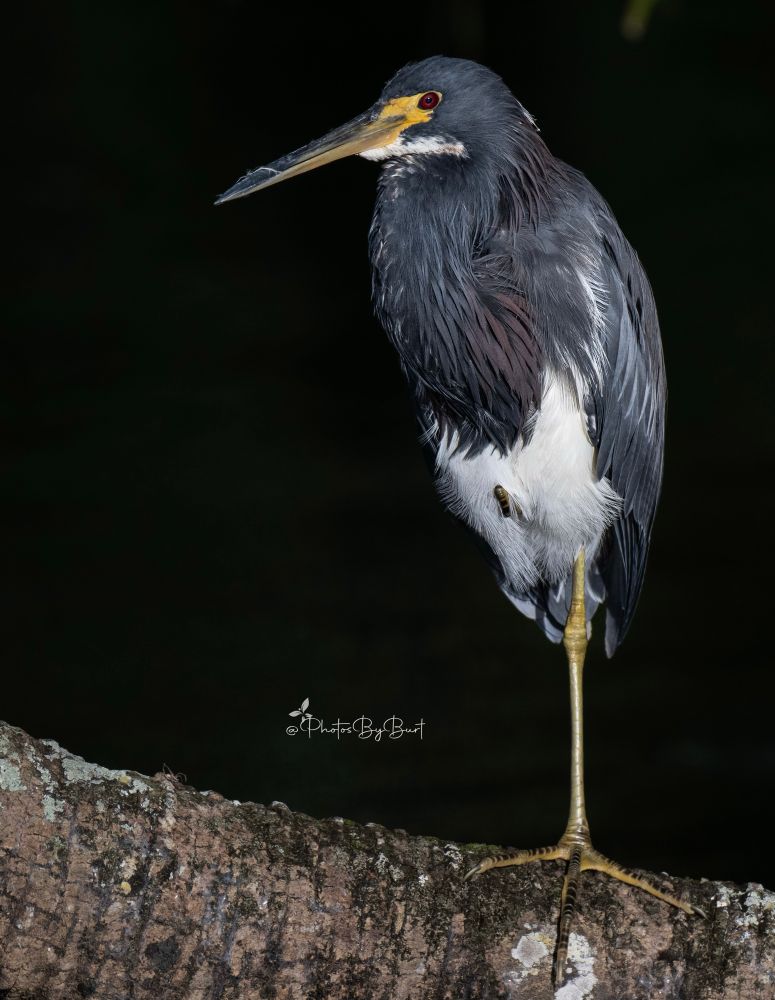
“Creativity is the Heron within us waiting to fly; through her imagination, all things become possible.” Tricolored Heron taken by me with my Nikon Z9. 🪶 #bird #birder #photography #photooftheday #wildlifephotography #wildlifephotographer #nature #art #bluesky #photographer #nikon #digitalart
14.02.2025 17:32 — 👍 133 🔁 3 💬 1 📌 0
I was thinking the same thing.LOL!
13.02.2025 13:07 — 👍 1 🔁 0 💬 0 📌 0
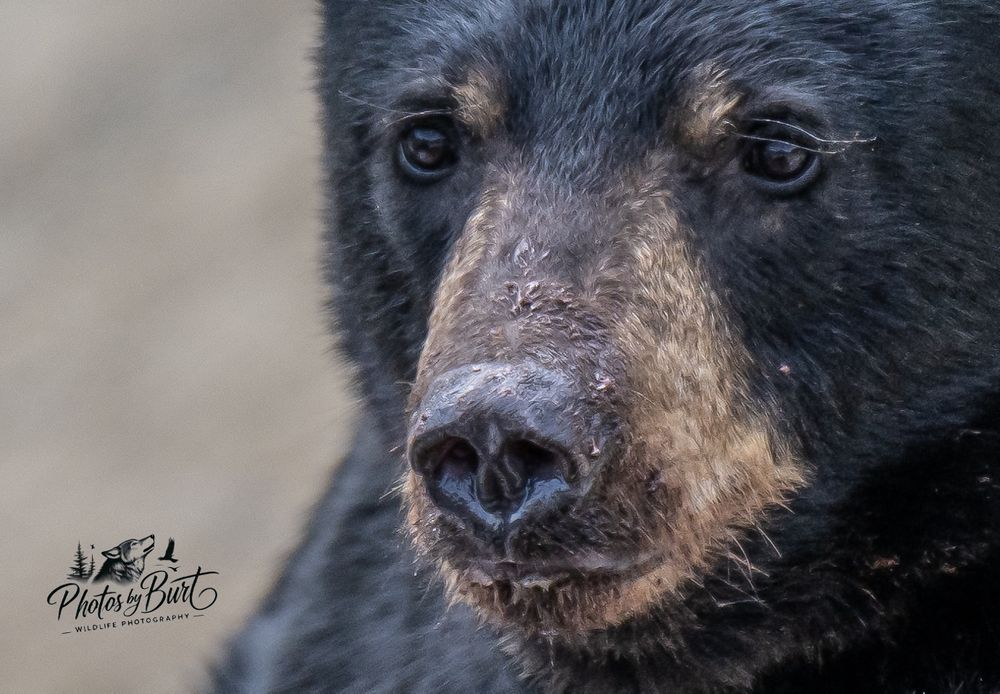
This is a Black Bear. Some individuals may develop a white "crescent moon" blaze on the chest. This white blaze, which is constant in Asian black bears, occurs in only 25% of North American black bears. The skulls of American black bears are broad, with narrow muzzles and large jaw hinges. In Virginia, the length of adult bear skulls was found to average 262 to 317 mm (10.3 to 12.5 in). Females tend to have slenderer and more pointed faces than males. Their claws are typically black or grayish-brown. The claws are short and rounded, being thick at the base and tapering to a point. Claws from both hind and front legs are almost identical in length, though the foreclaws tend to be more sharply curved. The paws of the species are relatively large, with a rear foot length of 13.7 to 22.5 cm (5.4 to 8.9 in), which is proportionately larger than other medium-sized bear species, but much smaller than the paws of large adult brown, and especially polar bears. The soles of the feet are black or brownish and are naked, leathery and deeply wrinkled. The hind legs are relatively longer than those of Asian black bears. The typically small tail is 7.7–17.7 cm (3.0–7.0 in) long. The ears are small and rounded and are set well back on the head. American black bears are highly dexterous, being capable of opening screw-top jars and manipulating door latches. They also have great physical strength; a bear weighing 120 pounds (54 kg) was observed turning flat rocks weighing 310 to 325 pounds (141 to 147 kg) by flipping them over with a single foreleg. They move in a rhythmic, sure-footed way and can run at speeds of 25 to 30 miles per hour (40 to 48 km/h). Black bears have good eyesight and have been proven experimentally to be able to learn visual color discrimination tasks faster than chimpanzees and just as fast as domestic dogs. They are also capable of rapidly learning to distinguish different shapes such as small triangles, circles and squares.
Great survival tip: "If it's black, fight back; if it's brown, lie down; if it's white, say good night.” Black bear image taken by me with my Nikon Z9. 🐻 🪶 #photography #photooftheday #wildlifephotography #wildlifephotographer #nature #bear #art #bluesky #photographer #nikon #furry #digitalart
13.02.2025 01:49 — 👍 40 🔁 2 💬 1 📌 0
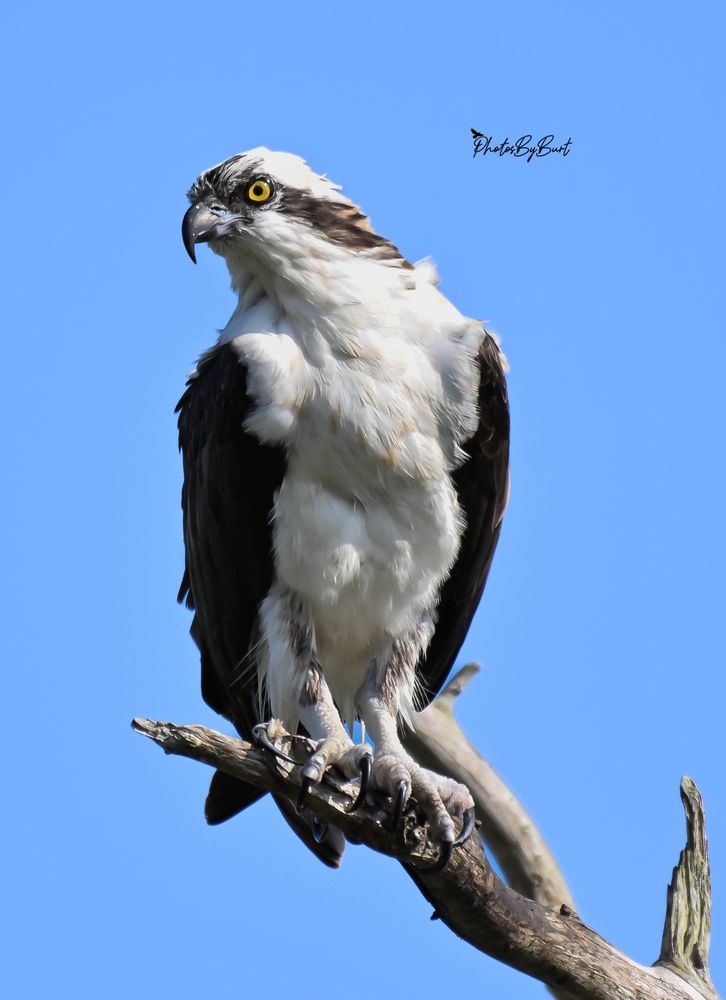
This is an Osprey perched on a limb. The osprey is 0.9–2.1 kg (2.0–4.6 lb) in weight and 50–66 cm (20–26 in) in length with a 127–180 cm (50–71 in) wingspan. It is, thus, of similar size to the largest members of the Buteo or Falco genera. The upperparts are a deep, glossy brown, while the breast is white, sometimes streaked with brown, and the underparts are pure white. The head is white with a dark mask across the eyes, reaching to the sides of the neck. The irises of the eyes are golden to brown, and the transparent nictitating membrane is pale blue. The bill is black, with a blue cere, and the feet are white with black talons. On the underside of the wings the wrists are black, which serves as a field mark. A short tail and long, narrow wings with four long, finger-like feathers, and a shorter fifth, give it a very distinctive appearance. The sexes appear fairly similar, but the adult male can be distinguished from the female by its slimmer body and narrower wings. The breast band of the male is also weaker than that of the female or is non-existent, and the underwing coverts of the male are more uniformly pale. It is straightforward to determine the sex in a breeding pair, but harder with individual birds
“The osprey and owls are the only raptors whose outer toe is reversible.” Image taken by me with my Nikon Z9. 🪶 #bird #birder #photography #photooftheday #wildlifephotography #wildlifephotographer #nature #god #art #bluesky #photographer #nikon #digitalart #love #raptor #beautiful #camera #natgeo
12.02.2025 01:47 — 👍 81 🔁 4 💬 0 📌 0
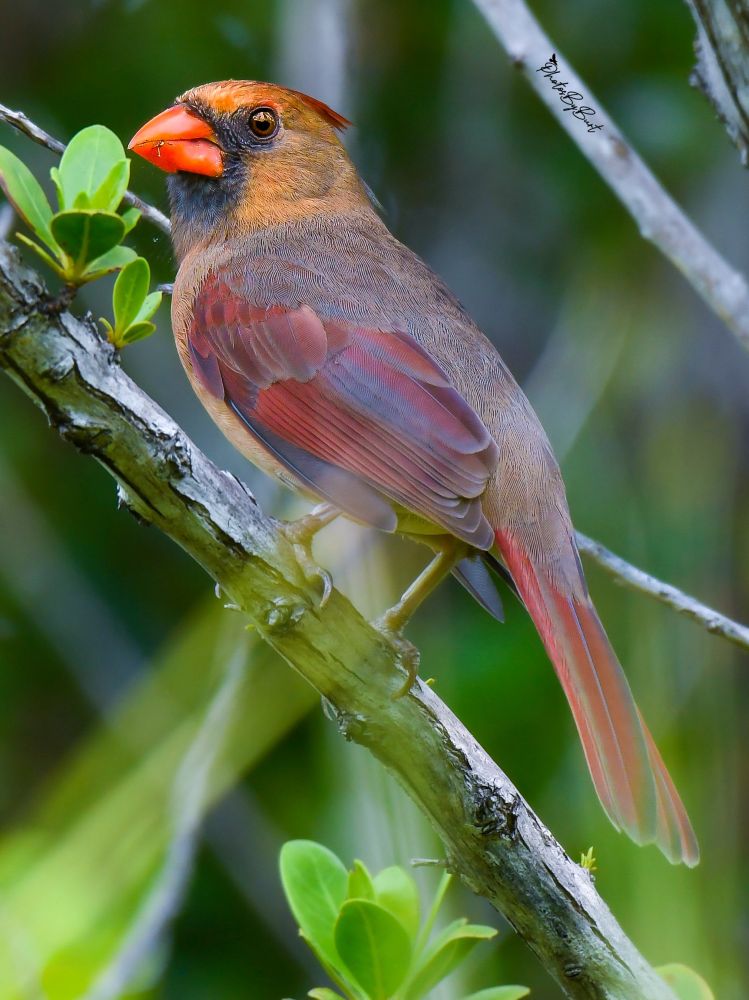
The northern cardinal is a mid-sized songbird with a body length of 21–23.5cm (8.3–9.3in) and a wingspan of 25–31cm (9.8–12.2in). The adult weighs from 33.6–65g (1.19–2.29oz), with an average 44.8 g (1.58oz). The male averages slightly larger than the female. The female is fawn-colored, with mostly grayish-brown tones and a slight reddish tint on the wings, crest, and tail feathers. The face mask of the female is gray to black and is less defined than that of the male. Both sexes possess prominent raised crests and bright coral-colored beaks. The beak is cone-shaped and strong.
“The cardinal is named after cardinals of the Roman Catholic Church, who wear distinctive red robes and caps.” Image taken by me with my Nikon Z9. 🪶 #bird #birder #photography #photooftheday #wildlifephotography #wildlifephotographer #nature #god #art #bluesky #photographer #nikon #digitalart
11.02.2025 01:50 — 👍 45 🔁 2 💬 0 📌 0
Thanks!
10.02.2025 14:45 — 👍 0 🔁 0 💬 0 📌 0
LOL!!!
10.02.2025 00:25 — 👍 1 🔁 0 💬 0 📌 0
It’s one of my favorites for the same reason.
10.02.2025 00:25 — 👍 1 🔁 0 💬 0 📌 0
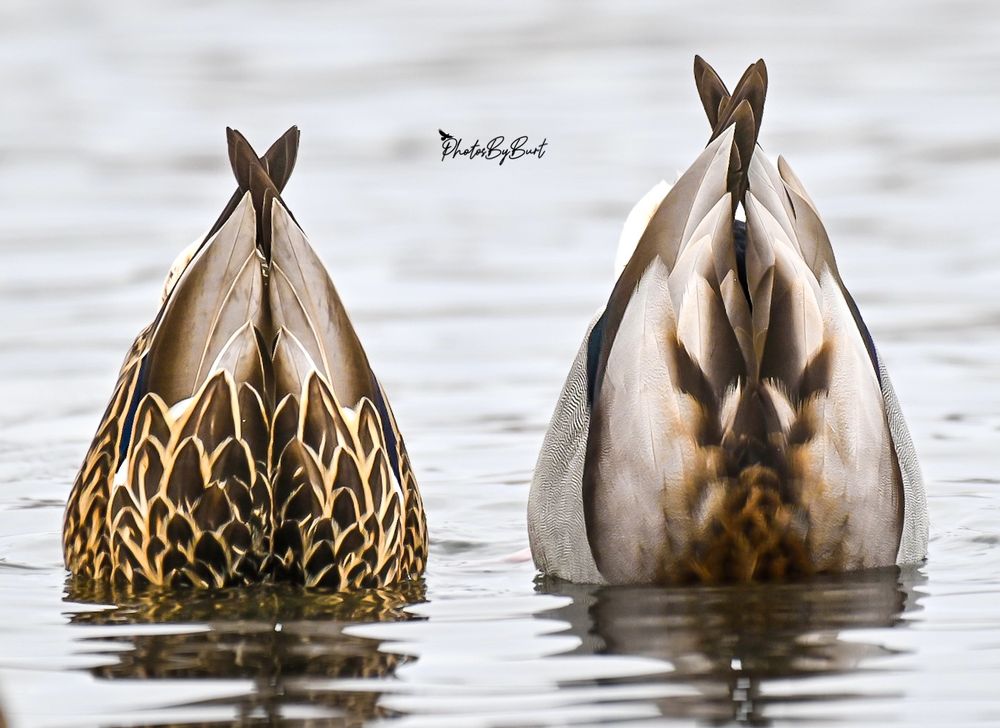
The mallard is a medium-sized waterfowl species that is often slightly heavier than most other dabbling ducks. It is 50–65 cm (20–26 in) long – of which the body makes up around two-thirds – has a wingspan of 81–98 cm (32–39 in), and weighs 0.7–1.6 kg (1.5–3.5 lb). Among standard measurements, the wing chord is 25.7 to 30.6 cm (10.1 to 12.0 in), the bill is 4.4 to 6.1 cm (1.7 to 2.4 in), and the tarsus is 4.1 to 4.8 cm (1.6 to 1.9 in).
“Wild ducks and tomorrow both come without calling.” Image of this Mallard pair feeding was taken by me with my Nikon Z9. 🪶☀️🌵 #bird #birder #photography #photooftheday #wildlifephotography #nature #art #bluesky #photographer #cat #god #nikon #digitalart #duck #ducks #birds #love #animals #love #life
09.02.2025 20:04 — 👍 51 🔁 3 💬 4 📌 0
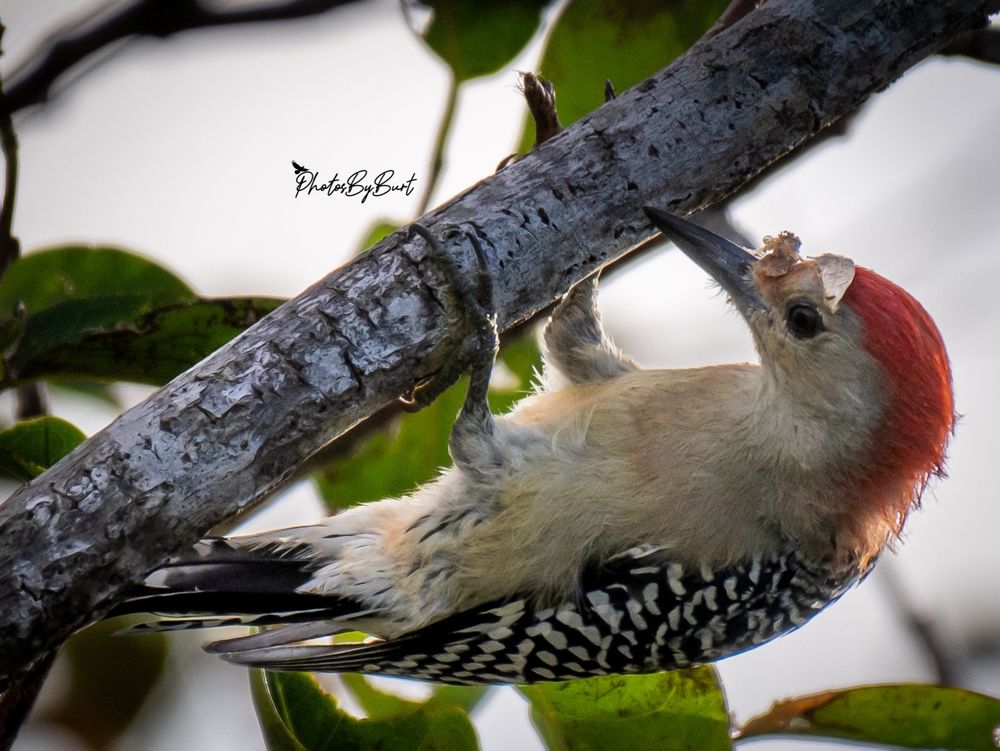
Adults are mainly light gray on the face and underparts; they have black and white barred patterns on their back, wings and tail. Adult males have a red cap going from the bill to the nape; females have a red patch on the nape and another above the bill. The reddish tinge on the belly that gives the bird its name is difficult to see in field identification. White patches become visible on the wings in flight. Red-bellied woodpeckers are 22.85 to 26.7 cm (9.00 to 10.51 in) long, have a wingspan of 38 to 46 cm (15 to 18 in), and weigh 2.0–3.2 oz (57–91 g).
"The spiritual meaning of the woodpecker is sheer determination, it reminds us to pay attention to all aspects of our lives." Image taken by me with my Nikon Z9. 🪶 #bird #birder #photography #photooftheday #wildlifephotography #wildlifephotographer #nature #art #bluesky #photographer #nikon
08.02.2025 20:07 — 👍 78 🔁 1 💬 0 📌 0
Thank you. I like yours too! Well done.
02.02.2025 05:18 — 👍 1 🔁 0 💬 1 📌 0
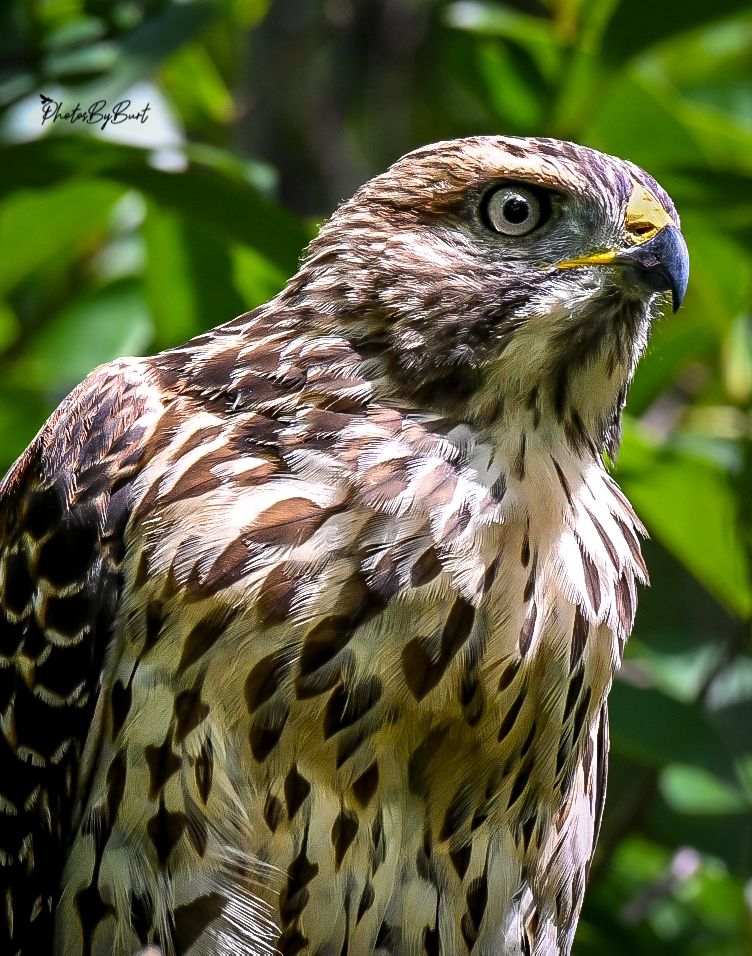
Red-tailed hawk plumage can be variable, depending on the subspecies and the region. These color variations are morphs, and are not related to molting. The western North American population, B. j. calurus, is the most variable subspecies and has three main color morphs: light, dark, and intermediate or rufous. A whitish underbelly with a dark brown band across the belly, formed by horizontal streaks in feather patterning, is present in most color variations. This feature is variable in eastern hawks and generally absent in some light subspecies. Most adult red-tails have a dark-brown nape and upper head, which gives them a somewhat hooded appearance, while the throat can variably present a lighter brown "necklace". Especially in younger birds, the underside may be otherwise covered with dark-brown spotting, and some adults may too manifest this stippling. The back is usually a slightly darker brown than elsewhere with paler scapular feathers, ranging from tawny to white, forming a variable imperfect "V" on the back.
The tail of most adults, which gives this species its name, is rufous brick-red above with a variably sized, black subterminal band and generally appears light buff-orange from below. The bill is relatively short and dark, in the hooked shape characteristic of raptors, and the head can sometimes appear small in size against the thick body frame. The cere, the legs, and the feet of the red-tailed hawk are all yellow, as is the color of bare parts in many accipitrids of different lineages.
“Indigenous cultures believe that hawks bring messages, and sometimes their presence serves as a warning of change.” This image of a Red-Tailed Hawk was taken by me with my Nikon Z9. 🪶 #bird #birder #raptor #photography #photooftheday #wildlifephotography #nature #art #bluesky #photographer #nikon
01.02.2025 22:39 — 👍 66 🔁 8 💬 1 📌 0
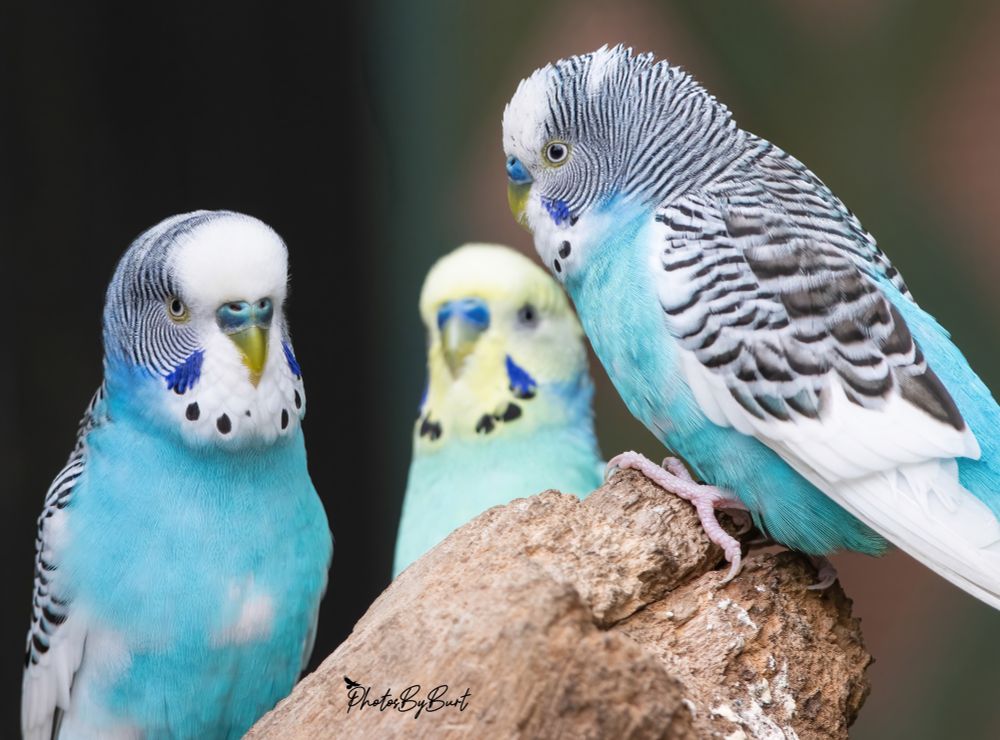
Wild budgerigars average 18 cm (7 in) long, weigh 30–40 grams (1.1–1.4 oz), 30 cm (12 in) in wingspan, and display a light green body colour (abdomen and rumps), while their mantles (back and wing coverts) display pitch-black mantle markings (blackish in fledglings and immatures) edged in clear yellow undulations. The forehead and face is yellow in adults. They display small, iridescent blue-violet cheek patches and a series of three black spots across each side of their throats (called throat patches). The two outermost throat spots are situated at the base of each cheek patch. The tail is cobalt (dark-blue); and outside tail feathers display central yellow flashes. Their wings have greenish-black flight feathers and black coverts with yellow fringes along with central yellow flashes, which only become visible in flight or when the wings are outstretched. Bills are olive grey and legs blueish-grey, with zygodactyl toes.
Mature males usually have a cere of light to dark blue, but in some particular colour mutations it can be periwinkle, lavender, purplish or pink – including dark-eyed clears, Danish pieds (recessive pieds) and inos, which usually display much rounder heads. Female budgerigars display more dominant behaviour compared to males of the species and may act aggressively towards them.
Budgerigars have tetrachromatic colour vision, although all four classes of cone cells will not operate simultaneously unless under sunlight or a UV lamp. The ultraviolet spectrum brightens their feathers to attract mates. The throat spots in budgerigars reflect UV and can be used to distinguish individual birds. While ultraviolet light is essential to the good health of caged and pet birds, inadequate darkness or rest results in overstimulation.
“You might be a redneck if your parakeet knows the phrase ‘Open up, Police!’”-Jeff Foxworthy. Image taken by me with my Nikon Z9. 🪶 #bird #birder #photography #photooftheday #wildlifephotography #nature #art #bluesky #photographer #nikon #parakeet #budgie
29.01.2025 04:59 — 👍 31 🔁 1 💬 0 📌 1
Cool! Thank you!!!
29.01.2025 01:03 — 👍 1 🔁 0 💬 1 📌 0
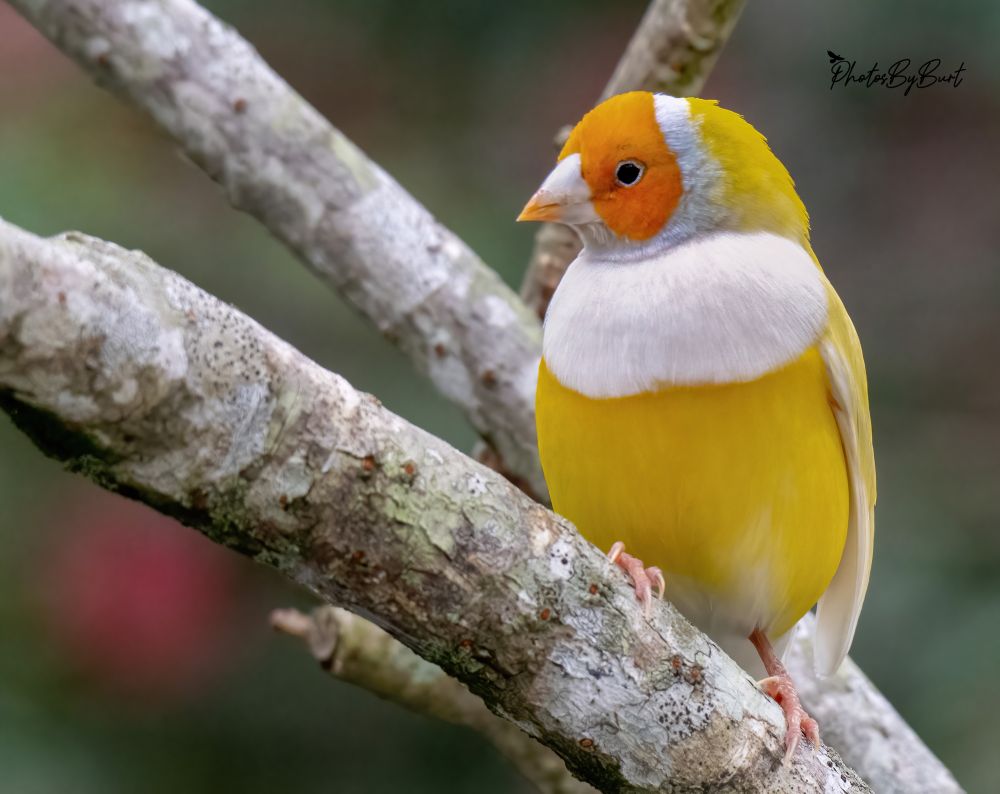
Both sexes are brightly coloured with black, green, yellow, and red markings. The females tend to be less brightly coloured. One major difference between the sexes is that the male's chest is purple, while the female's is a lighter mauve. Gouldian finches are about 125–140 mm (4.9–5.5 in) long. Their heads may be red, black, or yellow. Formerly considered three different kinds of finches, it is now known that these are colour variants of one species that exist in the wild. Selective breeding has also developed mutations (blue, yellow and silver instead of a green back) in both body and breast colour. There are several "prominent rounded tubercles" with an "opalescent lustre" at the back of the gape. These tubercles are commonly (and incorrectly) described as phosphorescent in spite of much scientific evidence to the contrary. It is believed that these tubercles simply reflect light and are not luminescent.
“The Gouldian Finch is arguably the world’s most beautiful bird. However, I would go further and suggest that ‘Gouldian—the world’s most beautiful finch’.” - Col Roberts. Image taken by my with my Nikon Z9. 🪶 #photography #photooftheday #wildlifephoto #nature #bluesky #photographer #bird #birder
26.01.2025 02:36 — 👍 55 🔁 1 💬 3 📌 1
Thank you!
25.01.2025 13:13 — 👍 1 🔁 0 💬 0 📌 0









![This is a close up image of the head of a yellow wild budgerigar with black stripes and black eyes. Wild budgerigars average 18 cm (7 in) long,[6] weigh 30–40 grams (1.1–1.4 oz), 30 cm (12 in) in wingspan, and display a light green body colour, while their mantles display pitch-black mantle markings (blackish in fledglings and immatures) edged in clear yellow undulations. The forehead and face is yellow in adults.](https://cdn.bsky.app/img/feed_thumbnail/plain/did:plc:nkbq3zourdnf3d6qh7df4h4i/bafkreie6hnskis6mfz6yptjp3dtiae7qkzbe2lx2bii7n7b57lx3wsersu@jpeg)










